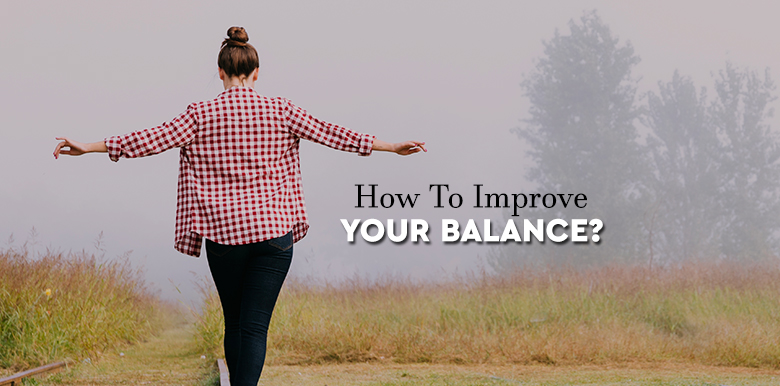Those who already have good balance take it for granted, but balance is actually a very delicate motion. Did you know that vertigo can be caused by inner ear infections? Or that gym rats who do countless calf raises per day can have worse balance than a person of the same age whose daily physical activity consists of brushing their teeth while standing on one leg? Well, if you didn’t, it’s time for a refresher course on what affects your balance, why balance is important, and how to improve it.

Improving balance
1. Get an exercise ball
Among the multitude of exercises you can do, you can also simply sit on it while you watch television or work on the computer. You’ll work on your balance and burn a few more calories.
2. Take a Pilates class to strengthen your core
Balance should be as popular in the fitness world as strength training, stretching, and cardio. Sadly, it’s not. But signing up for as many core-training classes as you can is a great way to improve your stability and balance.
3. Mix up your fitness routine
Repetitive exercises will only improve your balance so much. Great balance is directly related to your motor cortex plasticity, meaning how quickly you can respond to new stimuli.
Incredibly fit endurance athletes such as runners and cross-country skiers proved to have the same elasticity as non-athletes. Skill-trained dancers, gymnasts, and figure skaters, on the other hand, had dramatically higher plasticity. Whereas the repetitive training for endurance athletes often caused the brain to go on autopilot, the unpredictable nature of training for dancers, gymnasts, and skaters caused their neurons to be primed for action.
4. Weight shifts
Standing with your feet hip-width apart, lean slowly toward one leg until it’s bearing all your weight while lifting your other leg off the ground. Hold for up to 30 seconds, then move to the other side.
5. Strengthen your core
Building the muscles in the center of your body helps you feel centered too. And while improving your posture is really a behavioral practice, having a strong core can encourage you to stand tall and allows you to better control your muscles, making you more likely to regain your balance if you slip. Plus, when you can rely on the support of your core, everyday balance tasks like carrying the laundry or picking up your child are done with ease.
Test Your Balance
Try these three moves to see how well you can balance :
On both feet: Stand with feet together, anklebones touching, and arms folded across chest; then close your eyes. Have someone time you: Though it’s normal to sway a little, you should be able to stand for 60 seconds without moving your feet. Next, place one foot directly in front of the other and close your eyes. You should be able to stand for at least 38 seconds on both sides.
On one foot: Stand on one foot and bend other knee, lifting nonsupporting foot off floor without letting it touch standing leg. (Do this in a doorway so you can grab the sides if you start to fall.) Repeat with eyes closed. People age 60 and younger can typically hold the pose for about 29 seconds with their eyes open, 21 seconds with their eyes closed. People age 61 and older: 22 seconds with eyes open, 10 seconds with eyes closed.
On ball of foot: Stand on one foot with hands on hips, and place nonsupporting foot against inside knee of standing leg. Raise heel off floor and hold the pose—you should be able to do so for 25 seconds.
